Consider the egg — and when you do, consider deep-frying it. Holy Basil shares a recipe for Thai omelet
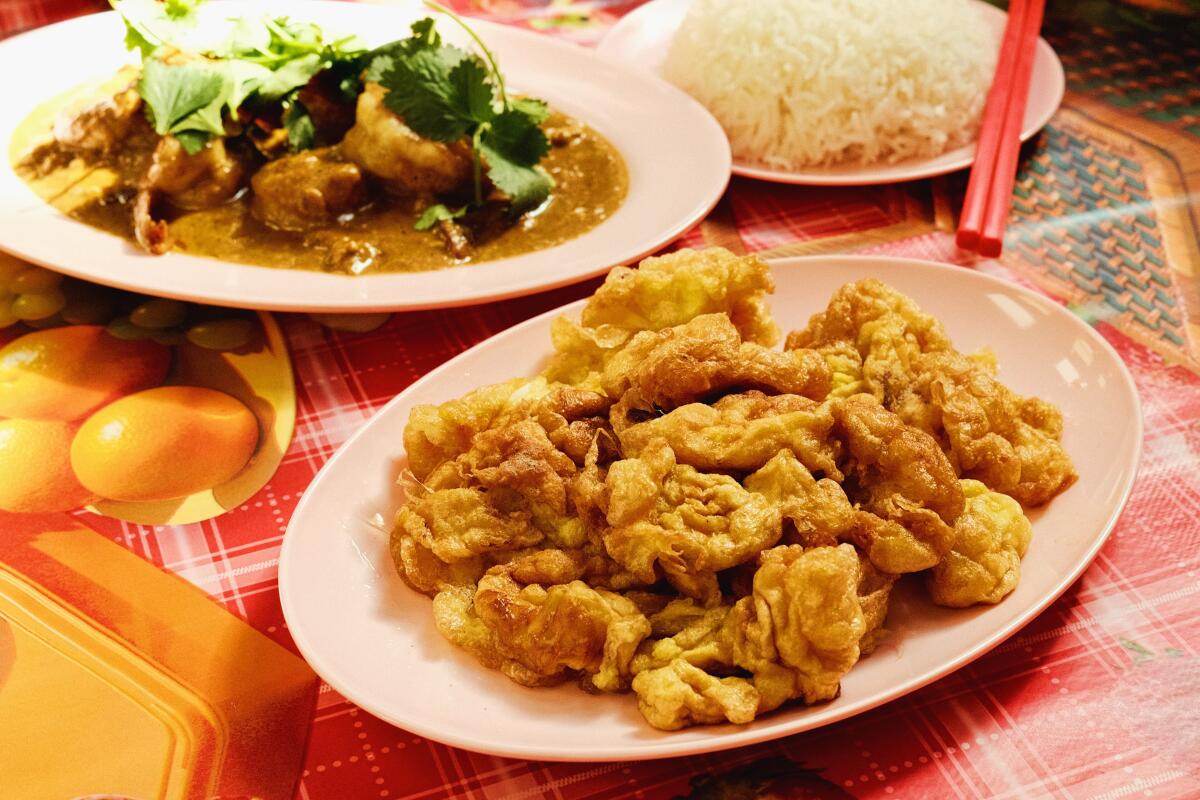
You are reading our Cooking newsletter
Sign up to get a taste of Los Angeles — and the world — in your own home and in your inbox every Friday
You may occasionally receive promotional content from the Los Angeles Times.
At Holy Basil, one of L.A.’s top 101 restaurants, chef Wedchayan “Deau” Arpapornnopparat serves one of the most iconic egg dishes in the world, and one I haven’t stopped thinking about for weeks. After launching their downtown location during the pandemic, he and partner Tongkamal “Joy” Yuon recently debuted a second Holy Basil in Atwater Village, where he puts kai jiew on full display: The fluffy Thai omelet is whipped until bubbly and then slowly fried in scalding oil, instantly puffing up for a cloudlike inner texture.
“It can be breakfast, it can be brunch, you can do lunch and dinner — it can be anything,” he said of the beloved street food.
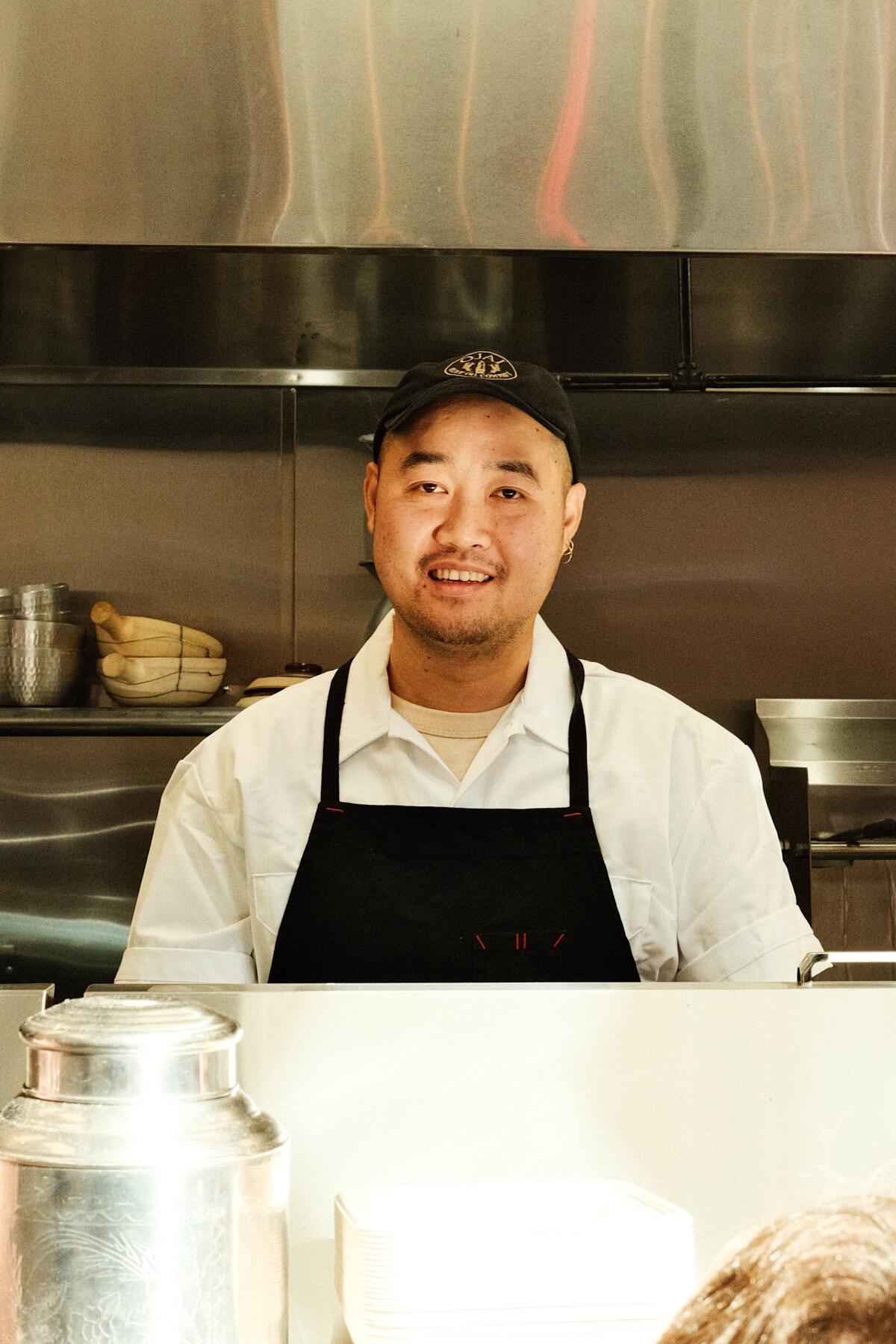
Arpapornnopparat says it’s the first dish he learned to make, with memories of pulling up a short stepping stool in the kitchen to peer over his mother and aunt as they prepared it and so many other Thai dishes, passing their knowledge on to him.
“It’s such a simple dish that maybe it’s the first thing you learn cooking in Thailand,” he said, sitting down to a plate of it in his Atwater Village restaurant. “Your mom probably will be like, ‘Hey, can you help me make kai jiew?’”
The outer surface of kai jiew, all golden brown, provides a chewy exterior with crags and small fried bits that splay out around the edges for variety in texture — and, in Arpapornnopparat’s case, serve as the ideal vessel for catching every drop of prik nam pla, a classic Thai condiment.
“It’s a dipping sauce,” he said. “[It’s] basically almost like salt for other people, but it has aromatics like garlic and lime juice that’s unique to Thai cuisine in its balance of sweetness and sourness.”
Arpapornnopparat was kind enough to share his recipe for Kai Jiew and Prik Nam Pla with us, which I’ve had the pleasure of re-creating at home since. Enjoyed simply or with rice, it’s a recipe that shares well. Of course, it’s also simple enough that, with two pans going at once, two can be made simultaneously. (“You should be able to make two omelets at once,” Anthony Bourdain once wrote in his cookbook “Appetites,” a perennial favorite. “[But] probably no more. Unless you’re like me.”)
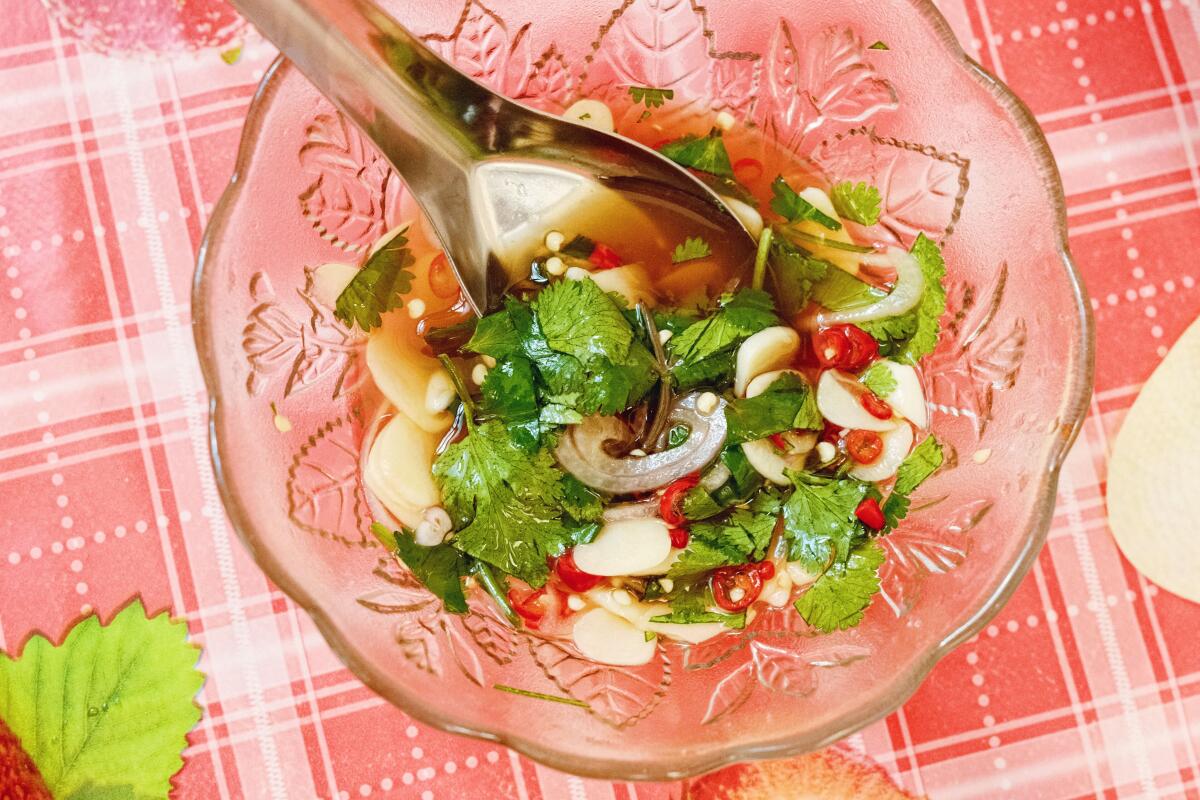
Of course, this isn’t the first time that L.A. Times has had egg on the brain. After you try your hand at Holy Basil’s kai jiew, I recommend revisiting some of our past recipes, whether you’re looking for herbaceous eggs cooked over hoja santa in an ode to Oaxaca’s La Cocina de Humo, or simply a classic soft scramble. Maybe you’re hoping for an egg-like vegan option, in which case I point you to our adapted recipe of Go Get Em Tiger’s delectable chickpea frittata. Whatever the case, we’ve got you covered, eggheads.
“I’ve always loved Robert Frost’s line about home being the place where, ‘When you have to go there, they have to take you in,’” former L.A. Times Food editor Russ Parsons wrote in 2011. “Perhaps I’m putting an overly optimistic reading on it, but it’s reassuring that even on our coldest, darkest nights, there is always a place with a warm light in the window. That’s kind of the way I feel about having eggs in the refrigerator.”
Eating out this week? Sign up for Tasting Notes to get our restaurant experts’ insights and off-the-cuff takes on where they’re dining right now.
Enjoying this newsletter?
Consider becoming a Times subscriber.
Hou Bao Daan
For another take on the quick-fried egg, try it Hong Kong-style. Genevieve Ko notes that Hou Bao Daan normally calls for over-easy eggs, but her version — fried in vegetable oil in a wok, skillet or nonstick pan — adds even more texture. These “purse” or “pocket” eggs encase the yolk in just-set egg whites, so while the center is soft and gooey, the oil fry makes for plenty of crispy edges; she even offers a variant for more fried texture, should Spanish-style, olive-oil-fried huevos con puntilla, or “lace,” appeal. Per Ko, serve this over rice with soy sauce, sesame oil and Chinese black vinegar and eat immediately, for best results.
Serves 1. Cook time: 5 minutes.
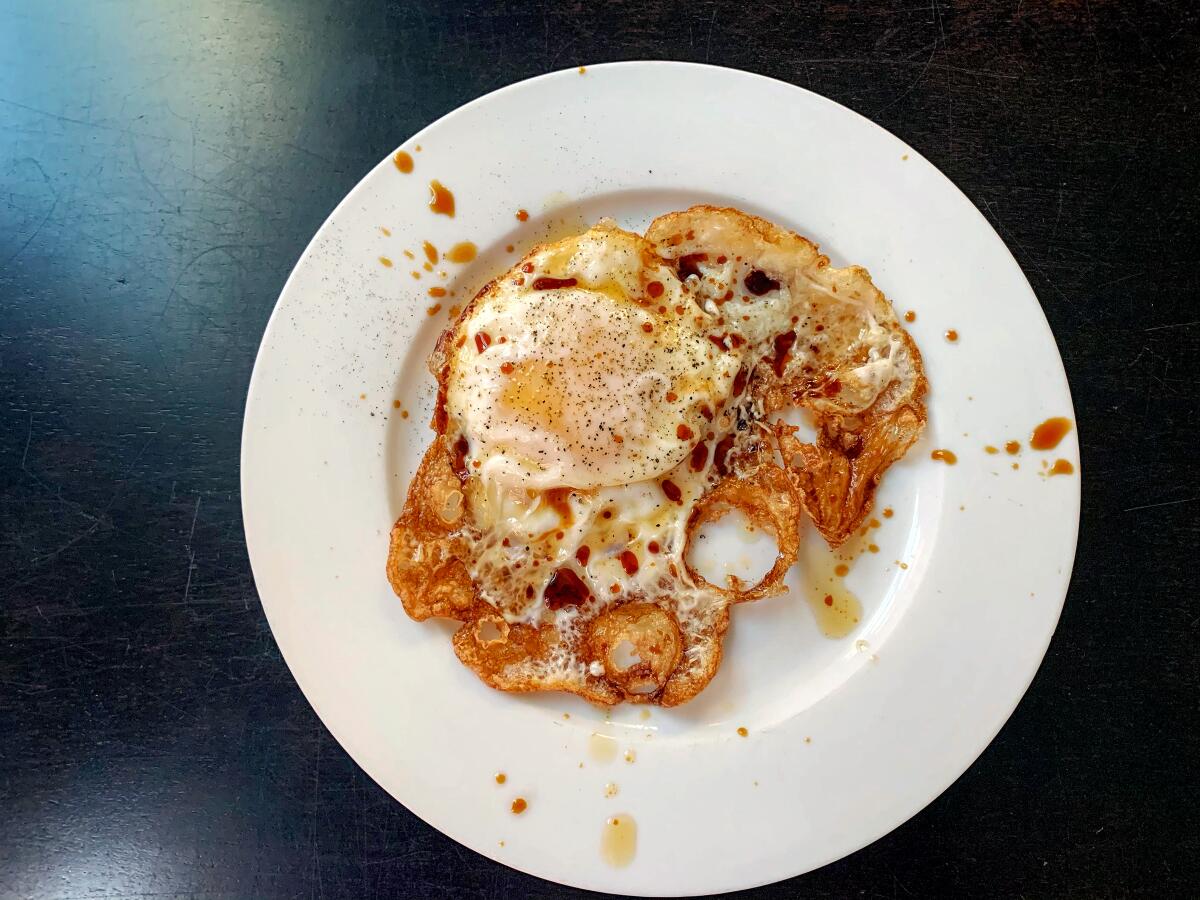
Creamy Scrambled Eggs With Fines Herbes
There’s a kind of luxury to a perfectly scrambled egg. An ultra-creamy scramble, be it thanks to butter or heavy cream, can turn the humble egg into something decadent and otherworldly. Former Food editor Russ Parsons claims the secret to the perfect creamy scramble is cold butter, monitoring the heat closely, and stirring constantly by whisk, spatula or wooden spoon. Adding cold butter partway through, he says, helps maintain a low temperature for the eggs in order to prevent setting and coagulation. Once plated, spruce up this scramble with caviar or truffles or, as Parsons does, a simple sprinkling of minced herbs — tarragon, parsley, chives and chervil — for a pop of freshness.
Serves 2. Cook time: 25 minutes.
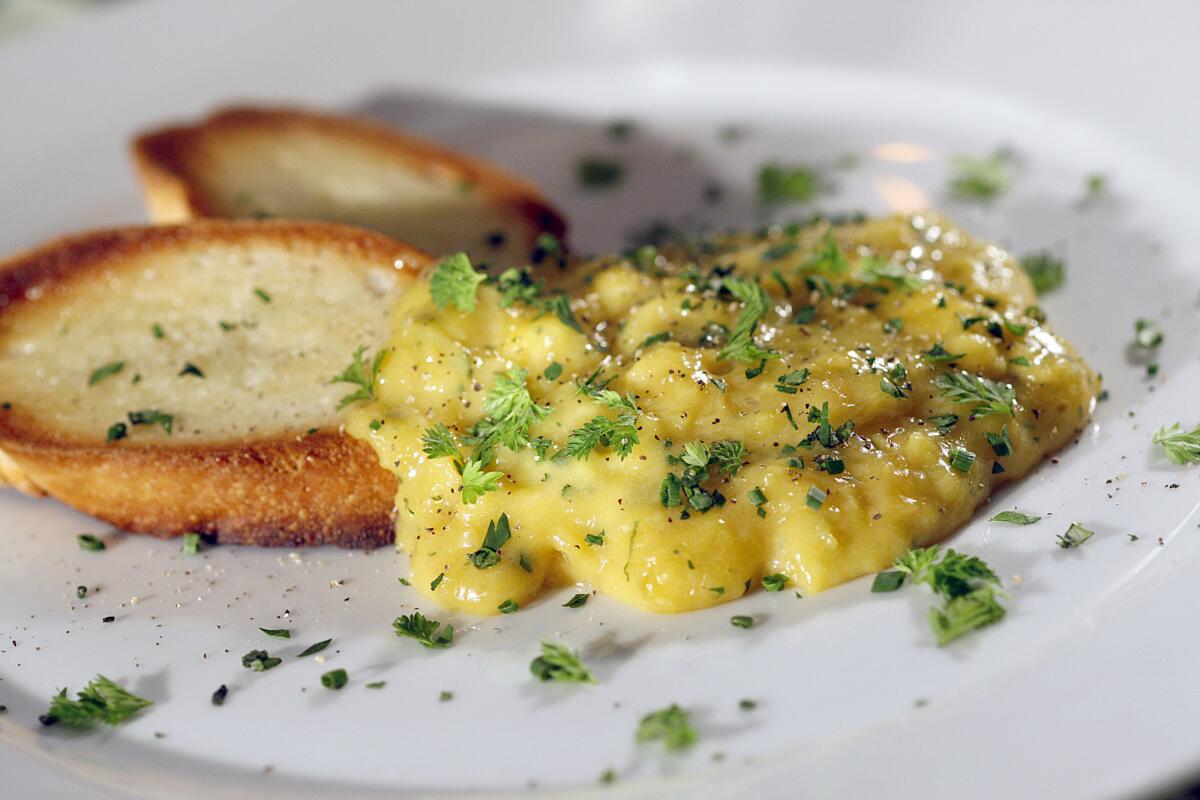
Chilaquiles Verdes With Hoja Santa Eggs and Garlicky Beans
In Paola Briseño-González’s chilaquiles verdes and beans, she pays homage to the version found at Thalía Barrios García’s La Cocina de Humo in Oaxaca, where eggs cook atop hoja santa leaves. The fragrant herb, also called Mexican pepperleaf, should impart verdant flavor to the eggs as they sear and partially steam in the pan before joining the beans and totopos. “The hoja santa eggs are layered against the salsa verde — made with cooked tomatillos, garlic, onions and serrano chile — for a tart and herbaceous bite,” Briseño-González writes.
Serves 4. Cook time: 1 hour.
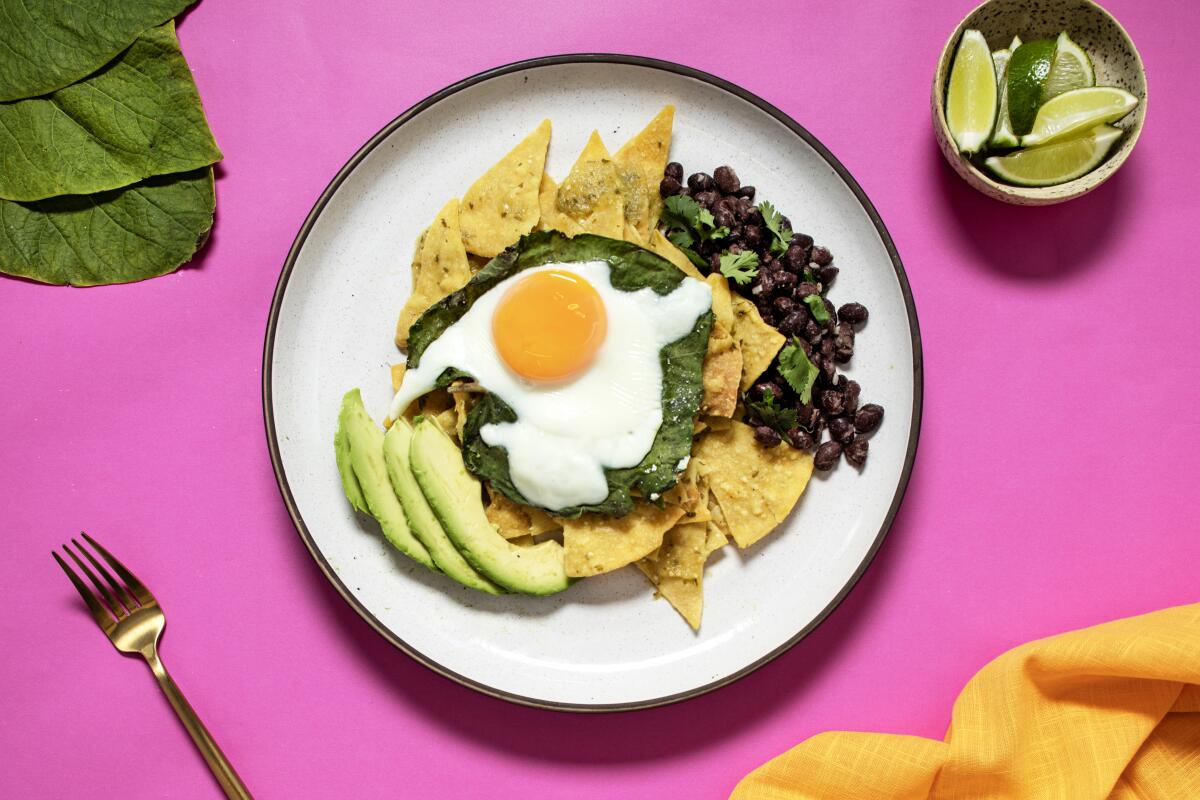
Chickpea Frittata With Tomatoes and Kale
Sometimes eggs aren’t even a necessity in an eggy dish. For non-eggheads, Genevieve Ko adapted the recipe for the excellent — and vegan — chickpea frittata formerly found at local cafe chain Go Get Em Tiger. This recipe, Ko says, “requires a little patience.” The slow and methodical cooking of the vegetables is what lends plump texture and pops of flavor, while a long bake time and subsequent overnight chill gives those chickpeas their custard-like, eggy consistency the next day. Slice it up and enjoy it chilled or, as it was prepared in the cafe, seared on each side for a crispy exterior.
Makes one 9-by-5-inch loaf. Cook time: 1 hour 45 minutes, plus overnight chilling.
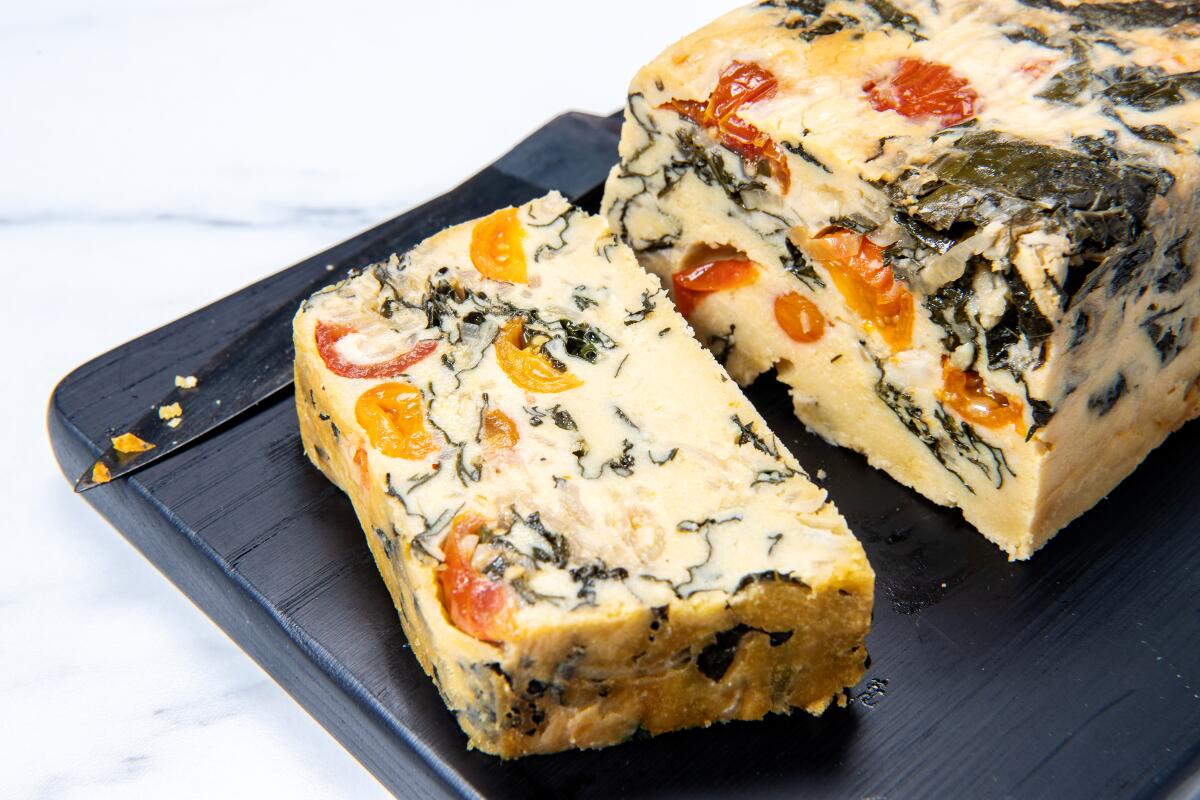
Have a cooking question?
Eat your way across L.A.
Get our weekly Tasting Notes newsletter for reviews, news and more.
You may occasionally receive promotional content from the Los Angeles Times.




